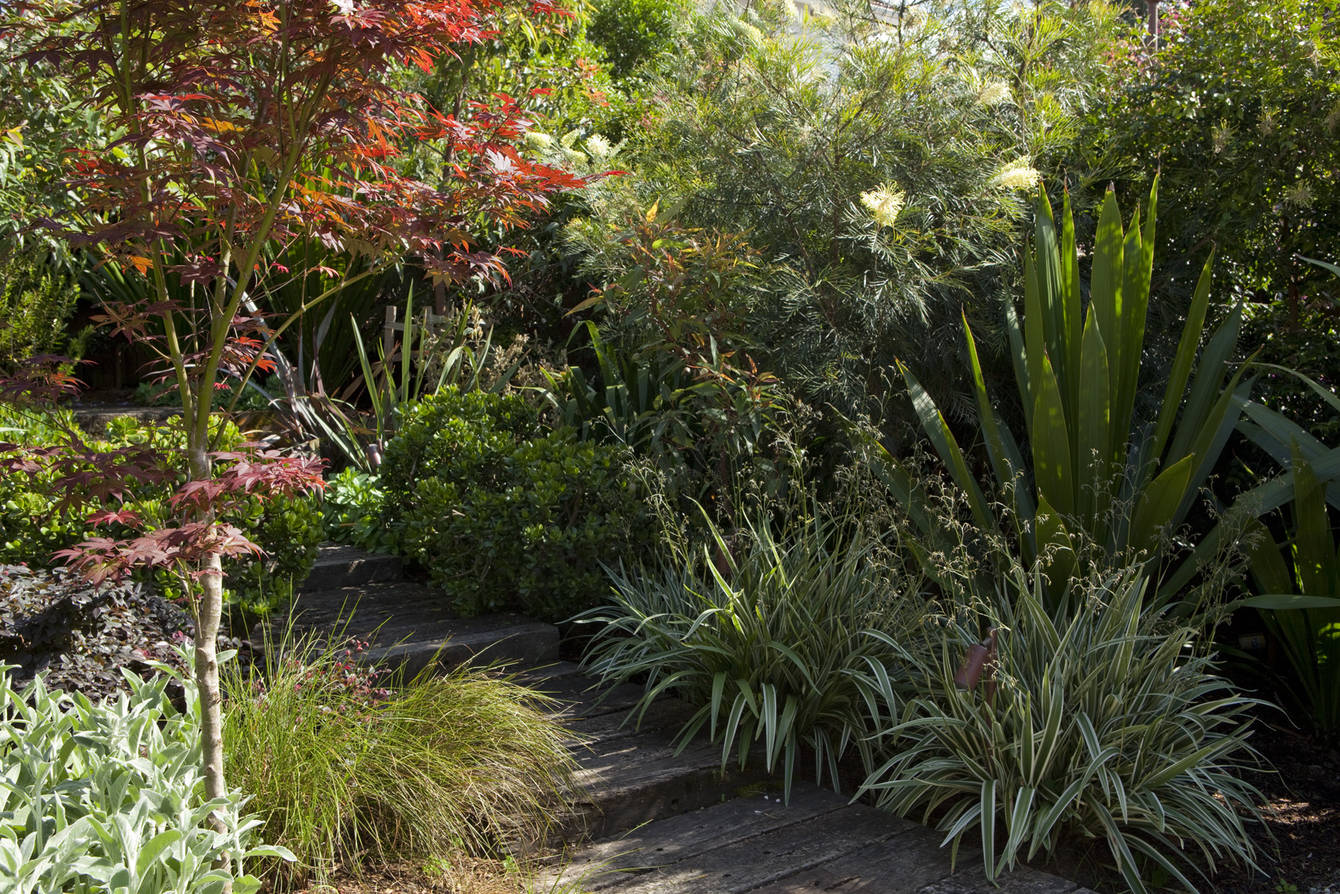Snow Pear
Pyrus nivalis, I use this tree more often than any other. I use…



Native plants are often overlooked as they are all considered woody, hot looking and generally uninspiring. I’m, however committed to using plants that have good form, leaf colour and texture so that a contrast is created amongst the different varieties of plants in the garden. I also like my plants to be tough, so if they meet this criteria, they’re in.
The natives that I use as part of an ‘all native mix’ or along side exotics in the same mix, and some of my favorites are listed:
This is only a glimpse of what is possible with natives, and the good news is that not much soil preparation is required when working with natives.
Our soils and plant species are so diverse that I suggest you look around at what is growing in your area and what you like, as natives can be quite specific in their tolerances of climates and soils. This takes the guess work out of choosing and growing natives, someone else has done the homework for you, and you know what plants are best suited to your garden, as well as knowing what form they might take. Native plants look really at home with certain succulents and exotics, unless you’re creating an ‘all native garden’ so don’t be afraid to mix them up.
